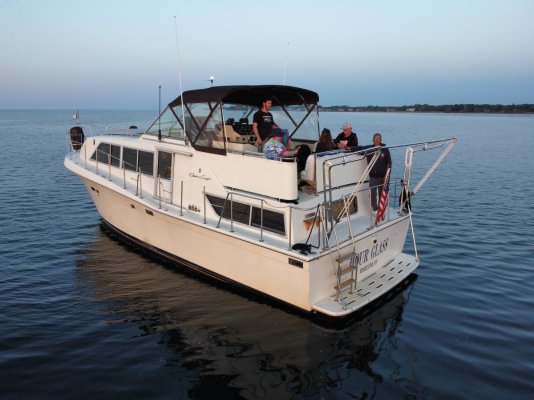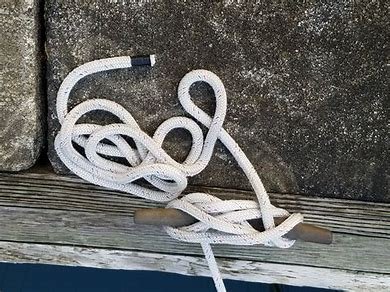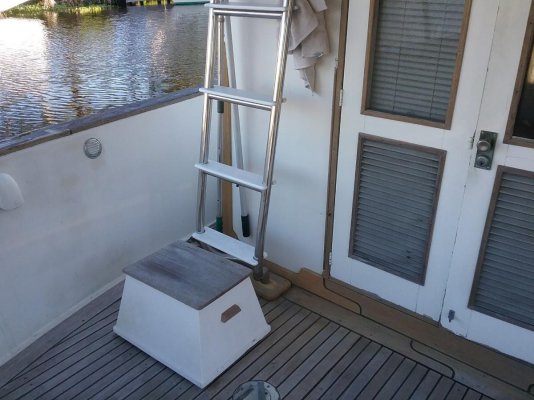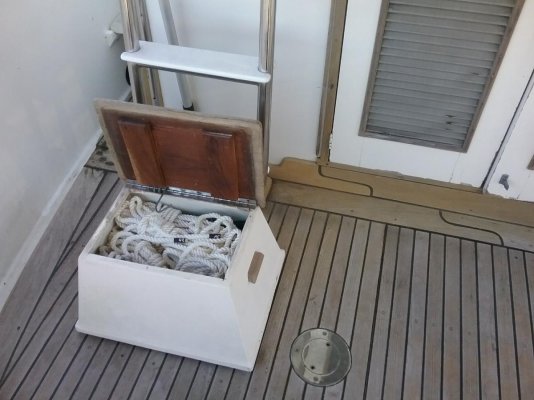Choices
Guru
- Joined
- Apr 16, 2018
- Messages
- 899
- Location
- Montgomery, Tx
- Vessel Name
- Choices
- Vessel Make
- 36 Grand Banks Europa
I have been perusing looper videos at the suggestion of my friends.
On most of these, the videos are of a ship shape vessel with smiling husband and wife demonstrating boat handling techniques with amazing gadgetry.
But what I question is most of them have their docklines tied to the bow railing for storage.
Coming from the offshore world, this is a big no-no. Why put something where if it comes lose you could run over it? I have seen it happen many times. You want to see all hell break lose watch a dockline being spooled up by the prop tear the railing off the boat.
Long ago before YouTube, I was taught if you leave a line at the bow, make sure it can not go overboard. If you have a high solid gunale, GB style, tie them off down low, but why not just bring them back to the lazarette?
I know there is little risk of stuffing a wave on the loop. But most of these folks couldn't cut a line away from a prop if it was in a bathtub.
We store our lines behind the ladder. If they come undone they fall on the deck behind the ladder.
What do you do and why?
On most of these, the videos are of a ship shape vessel with smiling husband and wife demonstrating boat handling techniques with amazing gadgetry.
But what I question is most of them have their docklines tied to the bow railing for storage.
Coming from the offshore world, this is a big no-no. Why put something where if it comes lose you could run over it? I have seen it happen many times. You want to see all hell break lose watch a dockline being spooled up by the prop tear the railing off the boat.
Long ago before YouTube, I was taught if you leave a line at the bow, make sure it can not go overboard. If you have a high solid gunale, GB style, tie them off down low, but why not just bring them back to the lazarette?
I know there is little risk of stuffing a wave on the loop. But most of these folks couldn't cut a line away from a prop if it was in a bathtub.
We store our lines behind the ladder. If they come undone they fall on the deck behind the ladder.
What do you do and why?






